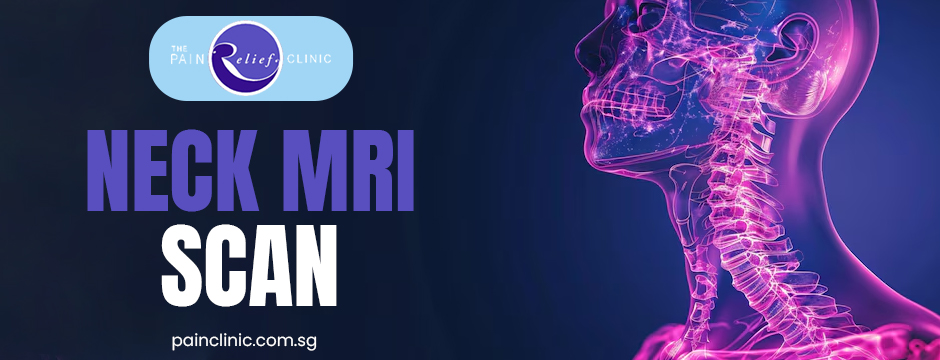Beyond X-Rays: The Superiority of a Neck MRI Scan
Are you tired of neck pain that just won’t go away? Is it holding you back from enjoying life?
Neck pain affects many people, from young athletes to older adults. It can be a minor issue or a sign of something serious. While X-rays are common, they often fall short in giving clear answers. A neck MRI scan offers a better way to find the root cause of your pain. Let’s explore why this advanced imaging tool is the top choice for diagnosing neck issues.
Understanding Neck Pain and Its Causes
Neck pain is a common problem. It can strike anyone, whether due to a sports injury or age-related wear and tear. For some, it’s a mild ache that fades with rest. For others, it’s a constant problem that interferes with everyday activities. In rare cases, neck pain can signal serious conditions like slipped discs, nerve compression, or even spine cancer. That’s why proper diagnosis is key.
Many people try rest, painkillers, or physiotherapy first. These can help with mild cases. But if your pain lingers or worsens, a neck pain MRI is often the next step. Unlike basic tests, a neck MRI scan gives a detailed view of your neck’s structures. This helps doctors pinpoint the exact cause of your discomfort.
Why X-Rays Aren’t Enough
X-rays are a common starting point for diagnosing neck pain. They’re quick and widely available. But they have limitations. X-rays mainly show bones. They can spot fractures or arthritis but miss soft tissue issues. Problems like slipped discs, nerve compression, or muscle strains often go unseen on an X-ray.
A neck MRI scan, on the other hand, shows both bones and soft tissues. It captures detailed images of muscles, ligaments, discs, and nerves. This makes it the gold standard for diagnosing complex neck problems. If you’re dealing with ongoing pain, relying on X-rays alone might delay the right treatment.
The Power of a Neck MRI Scan
A neck MRI scan uses magnetic fields to create clear, detailed images. It’s a safe, non-invasive test with no radiation, unlike X-rays. This makes it ideal for people with severe or persistent neck pain. The scan can reveal issues like:
- Slipped or herniated discs
- Nerve compression
- Spinal cord abnormalities
- Tumors or growths
- Inflammation or infections
These insights help doctors plan the best treatment for you. Whether it’s physical therapy, medication, or, in rare cases, surgery, a neck pain MRI ensures the plan targets the real problem.
Why People Hesitate to Get a Neck MRI Scan
Despite its benefits, some people avoid getting a neck MRI scan. The main concern is often cost. Many assume MRIs are expensive and out of reach. Others worry about the process, thinking it’s uncomfortable or risky. However, these concerns are usually rooted in misconceptions.
An MRI is one of the safest imaging tests available. It doesn’t use radiation, so there’s no risk of exposure. The procedure is simple—you lie still in a machine for 20–40 minutes. Most people find it painless, and modern machines are designed for comfort. As for costs, there are ways to make MRIs more affordable, like using insurance or government subsidies. The key is to talk to your doctor or clinic about options.
Benefits of Early Diagnosis with a Neck MRI Scan
Delaying a proper diagnosis can make neck pain worse. Untreated issues like slipped discs or nerve compression can lead to chronic pain or even permanent damage. A neck MRI scan helps catch problems early. This means faster treatment and better outcomes.
For example, a slipped disc caught early might need only physiotherapy. If ignored, it could require surgery. Similarly, nerve compression can cause numbness or weakness if left untreated. A neck MRI scan gives your doctor the full picture so they can act quickly.
Who Should Consider a Neck Pain MRI?
Not everyone with neck pain needs an MRI. Minor aches from poor posture or muscle strain often improve with rest or therapy. But certain signs suggest that a neck pain MRI is necessary. You should consider one if:
- Your neck pain lasts more than a few weeks
- Pain spreads to your arms or legs
- You feel numbness, tingling, or weakness
- You’ve had a recent injury, like from sports or an accident
- Other treatments haven’t helped
- Your doctor suspects a serious condition, like a tumor or nerve issue
If any of these apply to you, talk to your doctor. They can assess if a neck MRI scan is the right step.
What to Expect During a Neck MRI Scan
If you’ve never had an MRI, the process might seem daunting. But it’s straightforward. Here’s what happens:
- Preparation: You’ll remove metal objects like jewelry or glasses. The technician will walk you through the procedure and address any questions you may have.
- The Scan: You’ll lie on a table that slides into the MRI machine. You’ll need to stay still to ensure clear images. The machine makes loud noises, but you’ll get earplugs or headphones.
- Duration: The scan usually takes 20–40 minutes, depending on the detail needed.
- Afterward, you can go home right away. A radiologist will review the MRI images and provide a detailed report to your doctor.
The process is safe and comfortable for most people. If you’re claustrophobic, let the technician know—they can offer solutions.
How a Neck MRI Scan Guides Treatment
Once your neck MRI scan is complete, the images give your doctor a roadmap. They can see exactly what’s causing your pain. This leads to a tailored treatment plan. For example:
- A slipped disc might need physical therapy or, in severe cases, surgery.
- Nerve compression could require medication to reduce inflammation.
- Arthritis might benefit from lifestyle changes or joint injections.
- Serious issues like tumors can be caught early for prompt treatment.
Without an MRI, doctors might rely on guesswork. This can lead to treatments that don’t address the real issue. A neck MRI scan ensures your care is precise and effective.
Why One Should Choose The Pain Relief Clinic For Neck MRI Scans
When it comes to diagnosing neck pain, The Pain Relief Clinic trusts the unmatched clarity of a neck MRI scan. Unlike CT scans, which use radiation and struggle with soft tissue details, or ultrasounds that only capture surface issues, our advanced MRI technology reveals the full picture—bones, muscles, nerves, and discs. X-rays often miss critical problems, but our neck MRI scans ensure precise, safe, and radiation-free results.
Whether your pain stems from an injury, aging, or a complex condition, The Pain Relief Clinic uses this gold-standard imaging to deliver accurate answers fast, saving you from unnecessary tests and guiding you toward effective, non-invasive relief.
Take Control of Your Neck Pain Today
Neck pain doesn’t have to control your life. If rest or basic treatments aren’t working, don’t wait. A neck MRI scan can uncover the cause of your pain and guide you toward relief. It’s safe, effective, and far superior to X-rays for diagnosing neck issues. Whether you’re dealing with a sports injury, arthritis, or something more serious, this scan offers clarity.
For fast access to advanced imaging and expert care, reach out to The Pain Relief Clinic. Their team specializes in non-invasive solutions to help you get back to living pain-free.
FAQs
- Why is a neck MRI scan better than an X-ray?
A neck MRI scan provides detailed images of soft tissues, nerves, and discs, unlike X-rays, which mainly show bones. This makes it more effective for diagnosing neck pain.
- Is a neck MRI scan safe?
Yes, it’s completely safe. A neck MRI scan doesn’t use radiation and is non-invasive, making it ideal for identifying persistent or severe neck issues.
- When should I consider getting a neck MRI scan?
You should consider a scan if your neck pain lasts more than a few weeks, spreads to your arms, or causes numbness or weakness, or if other treatments haven’t helped.
- What can a neck pain MRI detect?
A neck pain MRI can detect slipped discs, nerve compression, tumors, spinal issues, and soft tissue injuries, helping guide accurate treatment.


